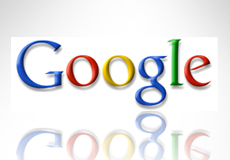By
David TobiaFebruary 6, 2013
YouTube’s “de-spamming” initiative aims to remove unintended views from videos. The initiative has removed millions of views from videos, and large channels like Sony, Universal and RCA have been among the most affected. Together, these channels have lost upwards of 2 billion views since the Google-owned video site began its de-spamming efforts in December 2012. Continue reading YouTube Channels Lose Millions of Views to De-Spamming
By
emeadowsFebruary 4, 2013
A recent survey suggest that while six out of 10 small business owners say they believe social media tools are valuable to their company’s growth, just three percent of the 835 surveyed believe Twitter has the most potential to help the company. Twitter faces challenges convincing small business owners of the advantages of using the short-messaging system to reach customers and expand their brands. Continue reading Small Businesses See More Potential in LinkedIn Than Twitter
By
emeadowsJanuary 31, 2013
While online video continues to grow, one challenge has involved effective revenue models. YouTube is addressing that hurdle with its decision to launch paid subscriptions for individual channels on its video platform. It is the Google-owned company’s “latest attempt to lure content producers, eyeballs, and advertiser dollars away from traditional TV, according to multiple people familiar with the plans,” writes Ad Age. Continue reading YouTube to Test Paid Subscription Channels on Limited Scale
By
emeadowsJanuary 28, 2013
Netflix and YouTube have combined efforts to launch DIAL, “a protocol that helps developers of second-screen apps to discover and launch applications on smart TVs and connected devices.” DIAL is already seeing support from Samsung, Sony, Hulu and BBC and “could become a key piece in efforts to establish an open alternative to Apple’s AirPlay,” according to GigaOM. Continue reading Netflix, YouTube Take On AirPlay with Second Screen Protocol
By
emeadowsJanuary 28, 2013
Viki is “the Hulu for the rest of the world,” according to the company’s CEO Razmig Hovaghimian. It takes content from all over the globe, licenses it for cheap and brings it to the U.S. and other countries. The company announced a partnership with Amazon that will add more than 1,000 hours of entertainment from Japan and Korea to Amazon’s Prime Instant service. Continue reading Viki to Expand Reach with Amazon Prime Instant Partnership
By
ETCentricJanuary 25, 2013
Streaming music startup Serendip began offering its “lean back” music discovery service to mobile devices this week with the debut of the Serendip iOS application. Similar to its Web version, the new app offers a “continuous stream of the music popular among friends, or others you’ve dubbed your ‘music soulmates,”’ explains TechCrunch. Continue reading Serendip Media: Music Discovery Service Launches iOS App
By
ETCentricJanuary 22, 2013
Analytics provider Next Big Sound has released its State of Online Music report, which provides a detailed look at how social networks, streaming services, online radio and digital downloads are impacting the way consumers discover and share new music. Online growth was staggering in 2012 with a 45 percent increase in new plays, 67 percent increase in new fans and 6 percent increase in new profile views. Continue reading Next Big Sound Tracks Online Music Discovery and Sharing
By
ETCentricJanuary 8, 2013
Google’s new “send to TV” feature is starting to pop up on a collection of new TVs and devices from companies like Sony, LG, Panasonic and Bang & Olufsen. The feature turns a consumer’s Android device into a YouTube remote for the big screen, and also allows users to push videos from devices to Google-equipped TVs. These YouTube-friendly sets will premiere at CES this week. Continue reading CES 2013: Android Devices Are Now YouTube Remotes for TVs
By
Rob ScottDecember 19, 2012
YouTube has released a new basic iOS camera app that uploads automatically and makes sharing to social networks as easy as pushing just one button. Simply called Capture, it “comes with a few key features that make it superior to the default iOS camera app: It offers image stabilization and color correction, and users can trim clips and even add a YouTube-approved soundtrack,” reports GigaOM. Continue reading Google Aims to Replace iPhone Camera App with YouTube Capture

